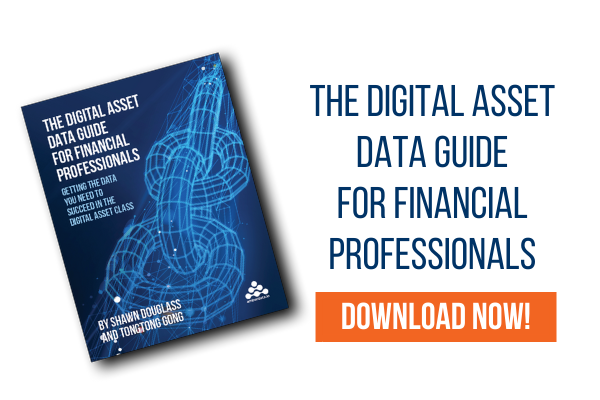
As the name implies, the blockchain is, well, a chain of blocks. But what is the block and why is the data contained inside so hard to understand?
The root of the complexity is the "crypto" part of cryptocurrency. It's not just a reference to the relative anonymity and security of digital assets, but also to the technology's connection to the field of cryptography. This relationship is why many concepts related to the blockchain are abstract and hard to understand without studying cryptography and its concepts—and one of the reasons why blockchain data is hard to interpret and leverage.
While explaining cryptographic concepts requires far more than a simple blog post, here's a high-level overview of the key parts of a blockchain block to provide some insight into the underlying structure.
The two parts of a block
A block's identity is effectively the output of a 256-bit cryptographic function, which creates a 64-character alphanumeric string. This string is called the hash, which identifies the block. A hash is an alphanumeric string created by "hashing" (running through a mathematical function) the information found in the block header. The block header contains information about the block itself, while information about the block's associated transactions is contained in the block's body.
Different blockchains use different hash functions—for example, Bitcoin uses the SHA-256 function while Ethereum uses Keccak-256.
The block header
The block header contains six pieces of information about the block:
- The previous block's hash
- The version of the blockchain's validation rules the block follows
- The timestamp of the exact moment the block was mined and validated
- The target size of the hash in bits, indicating the difficulty
- The nonce, a hexadecimal number that needs to be lower than the target size number in order for the block to be mined
- The root hash of the Merkle Tree
The root of the what tree?
The Merkle Tree is named after Ralph Merkle, the scientist that invented the entire idea of cryptographic hashing (without which cryptocurrency as we know it would not exist).
Also known as a "hash tree," the Merkle Tree is a tool for verifying data that is being stored, transferred, or handled between computers. In cryptocurrency, this tree is used for storing the hashes of all transactions associated with a blockchain network.
Visually, it is inverted from the typical concept of a tree. The root, which contains the hash of the last transaction, is at the top of the Merkle Tree rather than the bottom. It will connect to the hashes at the level below, which branch out further down depending on the volume of past transactions.
The block body
fThe body of the block is much simpler than the header. It contains a transaction counter that indicates the number of transactions contained in the block and the list of associated transactions.
Putting it all together
Without the identifying information from the header, the transaction information from the body is meaningless since it is impossible to determine where on the blockchain those transactions fit.
If your brain is starting to hurt from trying to make sense of how 64-character strings and inverted trees can be converted into actionable financial insights, don't feel bad.
Blockchain's cryptographic connection and associated complexity is why understanding blockchain data requires specialized knowledge and expertise. This expertise is developed through years of experience converting blockchain data into actionable information. To be truly useful, blockchain data must be combined with off-chain data, adding yet another dimension of difficulty.
How institutions can make this simple
This complexity is one of the many reasons why institutions shouldn't attempt to build their own blockchain data infrastructure. Not only would that require the firm to enter the data infrastructure business, but the firm would also have to develop an understanding of cryptography – and neither venture would directly inform better financial insights.
Instead, institutions are better served by outsourcing the blockchain data interpretation work to a specialized partner like Amberdata, that already has the necessary data infrastructure and blockchain expertise.
Our platform was built with institutional needs in mind – we know what data financial teams need and how to provide it in actionable data sets with 24/7 reliability for all major blockchains. You do not need to study cryptography to launch digital asset products. You need Amberdata.
Request a demo today to find out how our platform enables institutions to enter the decentralized finance without having to develop non-financial competencies they don't need.
Amberdata
Amberdata is the leading provider of global financial infrastructure for digital assets. Our institutional-grade solutions deliver data, analytics and comprehensive tools and insights that empower financial institutions to research, trade, and manage risk and compliance in digital assets. Amberdata serves as a...
